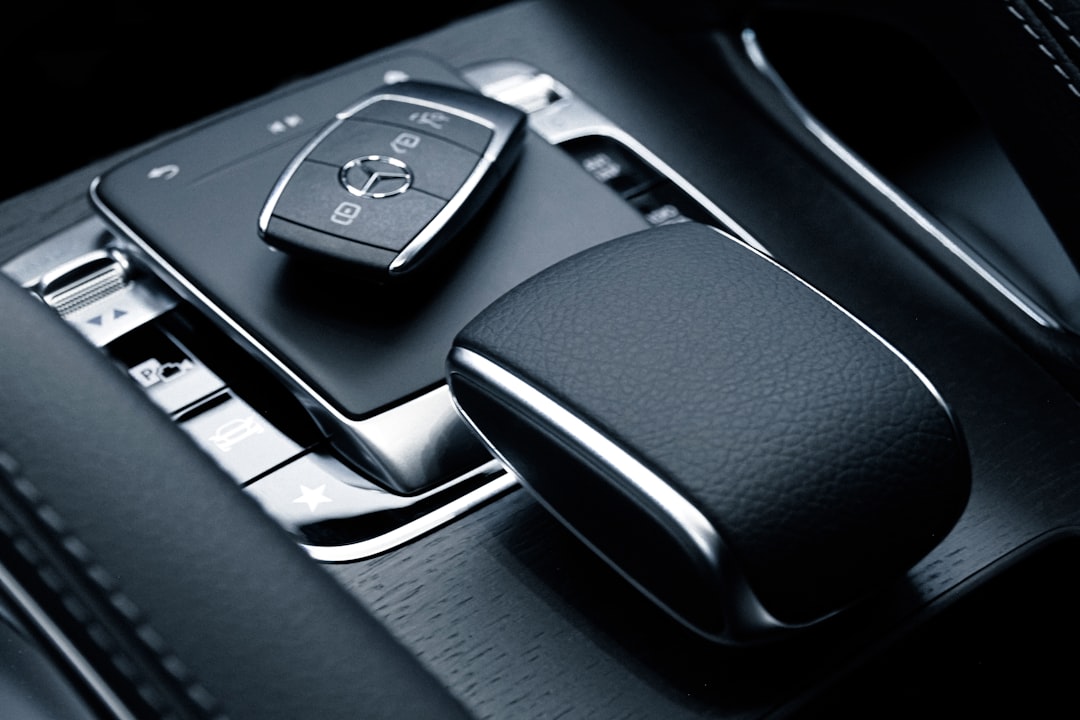

Engage prospects with a scan and streamline customer engagement with FREE QR code marketing tools by Sona – no strings attached!
Create a Free QR CodeFree consultation

No commitment

Engage prospects with a scan and streamline customer engagement with FREE QR code marketing tools by Sona – no strings attached!
Create a Free QR CodeFree consultation

No commitment
Auto consignment dealers face a unique set of obstacles in an increasingly competitive marketplace, particularly when it comes to capturing and nurturing high-value leads before they slip away. Legacy processes like printed flyers, paper forms, and manual inquiry logs frequently result in missed opportunities, as potential buyers or sellers often research options without ever filling out a form or contacting the dealership directly. In these moments, leads go untracked, and dealers have little visibility into real buyer interest or intent, which can lead to frustration and lost revenue.
At the same time, today’s car shoppers and consignors expect seamless, immediate engagement, especially as they consider consignment versus traditional dealerships or seek clear guidance on the vehicle consignment process. QR codes have emerged as a pivotal link between offline interactions and data-driven digital outcomes for auto consignment operators, as seen in these dealership QR strategies. With a simple scan from a lot sticker, print ad, or showroom sign, prospects are guided instantly to listings, appraisal tools, virtual tours, or even digital legal agreements, without the friction of manual entry or app downloads.
By incorporating QR codes throughout every stage of the consignment journey, auto consignment dealers can overcome missed lead capture, address gaps in visibility, track engagement, and respond faster than traditional methods ever allowed. When implemented strategically, QR code workflows make it possible to personalize outreach, segment high-intent leads, and optimize marketing with unprecedented clarity. Below, discover how to leverage QR codes for maximum lead generation and conversion in the auto consignment sector.

Many auto consignment dealers are frustrated by the number of promising prospects who linger on their lots, browse inventory, and even express interest yet remain untracked because they never fill out a paper form or step into the showroom. This creates blind spots in your pipeline, makes follow-up feel like guesswork, and often hands warm opportunities to competitors. QR codes address this challenge head-on by making lead capture a seamless, digital-first experience that removes friction and invites immediate action at the exact moment of interest.
A QR-first approach shifts the conversation from manual handoffs and delayed intake to instant engagement. Instead of hoping a shopper calls later, or that a potential consignor returns with completed paperwork, you turn every physical touchpoint into a digital conversion point. The result is better data quality, faster response times, and a measurable lift in qualified leads entering your CRM.
For example, by replacing static window stickers with dynamic QR codes, dealers ensure that even anonymous visitors can access detailed vehicle pages, start a trade evaluation, or initiate consignment paperwork. Every scan becomes a digital handshake, eliminating manual errors, revealing buyer or seller intent, and enabling faster outreach that closes the loop while interest is still fresh.

Auto consignment thrives on timing and trust. Dealers must convert offline curiosity into digital action quickly, or risk losing potential buyers and consignors who are still researching their options. Traditional brochures or window stickers provide information but cannot capture contact details or qualify interest. QR codes bridge that gap by turning a glance or a question into a measurable interaction that fuels follow-up and personalization.
Beyond lead capture, QR codes introduce agility and accountability. You can update pricing, offers, or disclosures without reprinting materials, and you can attribute results to specific placements or messages. When teams can see which channels, vehicles, or creative variants are working, they invest smarter and close faster. For auto-specific tactics, see Sona QR’s industry hub.
Practical applications include QR codes on showroom signs with Scan to see full history and 360 tour, direct mailers that link to instant valuations, and consignment agreements that launch digital onboarding. Each code transforms static assets into conversion-ready touchpoints and creates a clear pathway for both buyers and sellers.

Different moments require different QR code formats. Choose formats that fit the action you want, then map those actions to the right stage of the buyer or consignor journey. For example, awareness-stage codes might lead to rich media listings or virtual tours, while conversion-stage codes trigger contact forms, appointment booking, or digital contracts. Aligning the format with intent ensures each scan feels relevant and valuable.
Static QR codes can work for evergreen assets like an about page or a fixed PDF, but dynamic QR codes are usually the better choice in auto consignment. Inventory changes quickly, and you need tracking to attribute performance. Dynamic codes support link editing and analytics, allowing you to optimize without reprinting materials.
Dynamic QR codes are especially effective for consignment because they let you update a vehicle’s destination as it moves through the funnel. For example, a code on a window sticker can start by linking to a gallery, then later link to similar inventory once that car sells, preserving the attribution value of every scan.
Dealers often guess which physical interactions drive online actions, then allocate budget accordingly. QR codes remove the guesswork by capturing data whenever and wherever interest occurs. By mapping code placements to the buyer and consignor journey, you learn which moments produce qualified leads and which assets deserve more investment.
Think beyond the lot. Any printed or digital surface that reaches your audience can host a QR code. The key is to match the CTA to the context. A code on a windshield should promise immediate value, such as vehicle history or price transparency, while a code on a referral card should spotlight incentives for sharing.
By auditing your current materials and adding QR codes with clear CTAs, you will turn untapped surfaces into reliable lead engines and feed your CRM with richer, more timely signals.

The most effective QR strategies focus on moments where interest is high but action is difficult or delayed. By reducing friction and capturing context, you can shorten the path from curiosity to conversation and from intent to agreement. Use cases should span both buyer and consignor journeys to balance inventory movement with intake volume.
Below are three high-impact examples that appear in nearly every auto consignment operation. Each one replaces a manual step with an automated flow that feeds your CRM and alerts your team.
Each use case transforms a static moment into a measurable micro-conversion. When these micro-conversions are integrated with CRM workflows and automated notifications, your team can respond while intent is strongest and move deals forward with confidence.
Every scan carries useful context: what someone looked at, where they were, and when they expressed interest. With the right setup, you can convert scans into audience segments and use them for precise retargeting across email, SMS, and paid media. This raises relevance, lowers costs, and produces higher conversion rates than broad, generic campaigns.
Distinguish between buyers and consignors from the outset. A scan on a window sticker suggests buyer behavior, while a scan on a consignment fee page signals seller intent. Tag these interactions appropriately so your follow-up content and offers feel timely and personal.
With platforms like Sona QR, every code can carry campaign parameters and behavioral tags by default. This turns offline interactions into digital audience data that powers relevant retargeting without guesswork. For tactics that turn these audiences into revenue, see Sona’s Playbook titled intent-driven retargeting.
QR codes are connectors that unify disconnected campaigns. When print, OOH, social, and showroom experiences roll up into a single tracking framework, you gain a clear picture of what truly moves people from awareness to action. This reduces waste and helps your team focus on placements and messages that repeatedly convert. For measurement strategy across offline channels, read Sona’s blog post titled offline attribution guide.
In auto consignment, the media mix often skews toward local visibility and point-of-sale materials. Window stickers, direct mail, neighborhood signage, and event sponsorships are common. QR codes make all of these measurable and optimizable, particularly when dynamic codes and standardized UTMs are used.
When these QR-powered touchpoints are centralized in Sona QR and synced with your CRM, your offline interactions feed a single source of truth. This gives marketing and sales the visibility needed to coordinate offers, measure ROI, and scale the tactics that win.
Consistent execution determines whether QR codes become a core growth engine or a set-and-forget experiment. Small details such as code size, contrast, CTA clarity, and landing page speed can be the difference between a warm lead and a missed chance. Use the steps below to launch high-performing campaigns designed for the realities of an auto consignment operation.
Before you begin, align on the business outcome. Are you trying to increase consignments this quarter, accelerate test drives for aged inventory, or reduce time-to-paperwork once a seller raises a hand? A precise goal simplifies design, placement, and measurement.
Clarify what success looks like and how you will measure it. Typical goals include boosting weekend consignment sign-ups, increasing test drive bookings for specific models, or digitizing onboarding paperwork to cut processing times.
Decide whether you need editability and analytics. In most dealer contexts, dynamic codes are the default due to changing inventory and the need for attribution.
Make your codes trustworthy and scannable in real-world settings. Test in the conditions where they will be used and ensure landing pages load quickly on mobile.
Place codes where they will be seen by the right people at the right time. Start with placements you already invest in, then scale to new channels as you learn.
Measurement is not optional. Close the loop between scans and revenue, then iterate based on what the data shows.
A disciplined approach keeps the program aligned with business goals and ensures you compound wins over time rather than restarting from scratch with each campaign.

Attribution is the missing link in many auto consignment marketing efforts. You might see foot traffic and hear positive feedback, but without concrete data it is difficult to credit a specific action for a closed deal or a newly onboarded consignor. Modern QR platforms give you the visibility to connect the dots from first scan to final outcome.
Tracking starts with accurate tagging and ends with integrated reporting. Use UTMs to capture source, medium, and campaign at the moment of the scan. Then connect scan events to downstream actions in your CRM such as form submissions, appointments, contracts sent, and vehicles sold or consigned.
Over time, this data uncovers which vehicles, messages, and placements produce the fastest sales cycles and the highest lifetime value. Your team can then refine creative, shift budget, and iterate on the tactics that repeatedly deliver returns.
Early QR wins become repeatable when you standardize best practices. Strong calls to action, clear benefits, and fast-loading mobile pages form the foundation. Layer in training for staff, consistent tagging, and automation for follow-up to ensure nothing slips through the cracks.
It also pays to get creative with where and how you place codes. Consider the entire neighborhood and community ecosystem around your store. Sponsorship banners at local events, postcards for nearby homeowners, or even QR-enabled referral cards for satisfied consignors can widen your net without overwhelming your team.
Creative deployment ideas include QR codes on key-tag sleeves for test drives that link to feedback forms, and QR codes on vehicle delivery folders that route buyers to service offers or referral rewards—easy to activate with stickers and labels.
Dealers who bake QR workflows into day-to-day operations consistently find that the combination of convenience and data changes the game. The following examples illustrate how small adjustments compound into measurable gains across lead capture, onboarding, and attribution.
Consider what you already print and place every week. If it can hold a QR code, it can become a conversion point. When those codes are dynamic and tracked, your entire marketing footprint becomes a learning engine that pays dividends over time.
These examples highlight a simple formula. Make scanning irresistible, capture the right data, and follow up fast. The rest is iteration and scale.
Execution quality can make or break QR outcomes. When codes are buried, CTAs are vague, or destinations do not match expectations, scan rates and conversions suffer. The good news is that these issues are easy to prevent with a short checklist and team alignment.
Equally important is legal and operational rigor. Consignment involves documentation, disclosures, and data handling. Make sure your digital experiences always reflect current terms and that sensitive data flows into secure systems.
When your legal, creative, and operational teams align on these basics, QR campaigns become reliable, repeatable, and scalable.
QR technology is redefining lead management and marketing effectiveness for auto consignment dealers. By turning every sticker, ad, or agreement into an opportunity for engagement and segmentation, rather than a static, one-way message, dealers can surface signals from previously anonymous visitors and capitalize on opportunities that would otherwise be lost. The winning formula is simple: high-visibility codes, clear CTAs, fast-loading mobile pages, and a commitment to follow up while intent is still high.
The strongest programs pair QR workflows with measurement, timely outreach, and continuous improvement. With Sona QR for code creation and analytics, and Sona.com for identity resolution and multi-touch attribution, auto consignment operators gain the transparency and responsiveness needed to outpace competitors. Start creating QR codes for free at Sona QR.
QR codes have revolutionized the auto consignment dealer industry by transforming traditional lead capture into a seamless, data-driven process. They empower dealers to acquire qualified leads effortlessly, enhance customer engagement at every touchpoint, and streamline follow-ups with prospects actively interested in consigning or buying vehicles. Imagine instantly knowing which listings or marketing materials generate the most inquiries—and acting on that insight in real time to close more deals.
With Sona QR, you gain access to dynamic, trackable QR codes that can be updated instantly without the hassle of reprinting. Each scan becomes a measurable opportunity directly linked to your revenue pipeline, enabling you to optimize campaigns and boost conversions like never before. Start for free with Sona QR today and turn every scan into a loyal customer, a high-value lead, or your next closed consignment sale.
Selling a car through a consignment dealer involves onboarding the vehicle with digital intake forms where sellers upload photos and documents, signing disclosures electronically, and the dealer handling the sale while capturing leads and engagement through tools like QR codes.
Consignment dealerships facilitate vehicle sales by allowing owners to list their cars for sale through the dealer, who manages marketing, lead capture, and sales processes, often using digital tools such as QR codes to track buyer interest and streamline onboarding.
QR codes enhance automotive marketing by enabling seamless lead capture, linking offline touchpoints to digital content, accelerating follow-up, keeping content current, measuring campaign effectiveness, improving cost efficiency, and personalizing outreach.
While the article does not specify how to find a reputable dealer, it suggests looking for consignment dealers who use modern tools like QR codes for transparent lead capture, fast digital onboarding, and measurable marketing effectiveness to ensure professionalism and responsiveness.
Best practices include using dynamic QR codes with clear benefit-focused calls to action placed in high-intent locations, tracking engagement by vehicle and campaign, integrating QR data into CRM workflows for fast follow-up, measuring outcomes continuously, training staff to promote scanning, and aligning campaigns with specific business goals.
Use Sona QR's trackable codes to improve customer acquisition and engagement today.
Create Your FREE Trackable QR Code in SecondsJoin results-focused teams combining Sona Platform automation with advanced Google Ads strategies to scale lead generation

Connect your existing CRM

Free Account Enrichment

No setup fees
No commitment required

Free consultation

Get a custom Google Ads roadmap for your business






Launch campaigns that generate qualified leads in 30 days or less.
